Intrduction of monitor
Everyone has a different criteria for choosing best monitor in 2024, There are a ton of best monitors in 2024 are launching, we are discussing about best monitor below:
A monitor is a fundamental output device on desktop computers, designed to display information processed by a computer graphically. This device converts digital data into visual images, allowing the user to interact and manipulate the information presented. The primary functionality of a monitor is to provide a visual interface between the computer and the user, being crucial for performing a variety of tasks, from word processing to graphic design and web browsing.
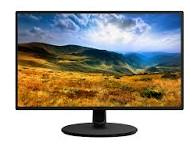
Table of Contents
History of monitor
Inventing the Monitor: The History About that Essential Tech DeviceWe Use to View Computer-Generated Data While no single individual can take credit for the invention of such a thing, it could be said that development threw various contributions at it over the years.
Boris Rosing and Vladimir Zvorykin presented an electromechanical television device that was capable of producing moving images as early as 1922. It paved the way for the later creation of displays in their current form. The CRT would continue to evolve into what we think of as the modern monitor however.
This was patented by Karl Ferdinand Braun and important to first computer monitors. This was followed by a host of monitor technology breakthroughs, such as the plasma display patented in 1964 by Donald Bitzer, Gene Slottow and Robert Willson; and liquid crystal displays – which were first described in the 1970s.
Key points in choosing the best monitor in 2024https://dessert-heaven.com/
There are a number of features that define what a best monitor in 2024 is like:
Luminance: measured in cd/m² or Nits, it measures the intensity of light emitted by the monitor. It is also known as “Brightness”. For choosing the best monitor in 2024 we have consider this.
Color depth: measured in bits, it is the amount of color the monitor can display. For choosing the best monitor in 2024 we also have consider this.
Color spectrum: these are the different color spaces for which they have been calibrated, such as sRGB or DCI-P3, to give a few examples. For choosing the best monitor in 2024 we also have consider this.
Aspect ratio: this is the relationship between the horizontal and vertical dimensions, such as 16:9 (for every 16 pixels wide, there are 9 high). For choosing the best monitor in 2024 we also have consider this.
Screen size: this is the length (expressed in inches) of the diagonal of the monitor screen. For choosing the best monitor in 2024 we also have consider this.
Screen resolution: The number of pixels on the screen, expressed as the product of the pixels on the horizontal side multiplied by the pixels on the vertical side, such as 1920 x 1080.
Refresh rate: The number of times the screen refreshes per second, measured in hertz (Hz). For choosing the best monitor in 2024 we also have consider this.
Response time: The time it takes for a pixel to change from on to off and back again. Usually expressed in milliseconds (ms). For choosing the best monitor in 2024 we also have consider this.
Contrast ratio: The ratio of the brightest a monitor can produce to the darkest color it can display. For choosing the best monitor in 2024 we also have consider this.
Delta-E: The accuracy with which the monitor can represent a color. Generally, a Delta-E between 2 and 4 is a good accuracy, but below this, the human eye cannot perceive the difference. For choosing the best monitor in 2024 we also have consider this.
Viewing angle: The angle, measured in degrees, at which a user can clearly see the monitor screen without colors being distorted. Panel type: Monitors use different types of panels, each with specific characteristics. They can be LED-VA, LED-IPS, LED-TN, etc. For choosing the best monitor in 2024 we also have consider this.
Pixel size: the size of a pixel represented on the screen. For choosing the best monitor in 2024 we also have consider this.
Video inputs: A PC monitor must have video inputs, which can range from the already outdated D-Sub (VGA) to DisplayPort or, in more modern monitors, the new USB-C standard. For choosing the best monitor in 2024 we also have consider this.
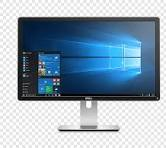
How does the monitor work?
In the case of liquid crystal display monitors, they are made up of two specially treated plates, which are made of polarized glass and pressed together. Between them there is a liquid crystal material that will respond to an electric current so that different wavelengths of light can pass between these different points on the surface.
Instead of creating points of light, the main purpose of an LCD monitor is to block most of the light, so that only certain wavelengths are allowed to pass through, which are then interpreted as colors by the human brain, and thus pass to the front of the monitor.
It is then a backlight that emits a continuous flow of light that will cover the entire back area of the monitor in each visible wavelength. The electric current created by the visual signal sent from the computer will cause the liquid crystal material to block the different wavelengths of light through its face, so that general shapes and colors of an image are finally created.
Behind the face of the monitor, but in front of the liquid crystal, there is a closed matrix with transistors connected to the pixels facing the screen. This is a matrix that is too thin to even look transparent. Anyway, as soon as a variable current like the one described runs through it, the current itself from manipulating the liquid crystal will cause certain pixels to light up, thus adding overall color to pass through the light in the background.
Parts of the Monitor
In general terms, a computer monitor is made up of
The casing: this is the external part that encloses the entire monitor. In LCD monitors, the most common color is black. In CRT screens, they are usually white.
Data connector: this is the cable that goes from the computer monitor to the computer or CPU. Without this, none of the images could be displayed on the monitor. Some monitors do not have a cable due to Bluetooth technology.
Button panel: this is where the user can adjust the brightness and contrast of the screen. The position of the screen is also adjusted.
Power button: this is the most visible. It works to turn the monitor on and off. Usually, when pressed, it highlights in blue on the screen, indicating that the monitor is on.
Power supply: this is the cable that connects the computer screen to the electrical power.
The display instrument: this is the area where all the images and programs are displayed and observed.
A support: Located at the bottom, it keeps the monitor stable and secure.
Types of the best monitor in 2024
Touchscreen – These are monitors that, in addition to functioning as a monitor, can be used as a touch screen by touching the screen with your fingers.
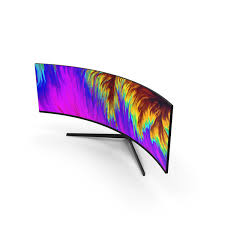
LCD
Liquid Crystal Display Monitors. These appeared on the market in the 1990s. They produced sharper images. An LCD monitor is made up of two specially treated plates of polarized glass pressed together. Between these plates is a liquid crystal material that responds to an electric current by allowing different wavelengths of light to pass through various points on its surface. Instead of creating points of light, the whole premise of an LCD monitor is to block out most of the light. To allow only certain wavelengths, interpreted as colors by our brains, to pass through the front of the computer monitor.
LCD Monitor
In the computer monitor screen there is a controller that receives the signals sent, transforms them into electrical signals by passing them through the liquid crystals. Sending out a backlight that emits a continuous stream of light that covers the entire back of the monitor in all visible wavelengths. The type of power supply created by the visual signal sent from the computer causes the liquid crystal material to block different wavelengths of light across its face to create the general shapes and colors of an image.
Behind the monitor screen, but in front of the liquid crystal is a closed matrix of transistors connected to the pixels on the face of the screen. This matrix is so thin that it appears to be transparent. When a variable current circulates the matrix, the same current that manipulates the liquid crystal, causes certain pixels to light up. Adding definition to the overall color passed through the backlight.
Advantages of LCD monitors
- It is lighter and more compact.
- It requires less electricity.
- It has better image resolution.
- Aesthetically attractive
They have less radiation generation
Disadvantages of LCD monitors
Depending on the user’s optics, it is easy to distort colors.
They are more expensive.
They contain mercury.
LED Monitor
(Light Emitting Diode), which means that it uses a light emitting diode. It is composed of polychromatic or monochromatic modules, which will allow images to be displayed. LED screens are a variant of the LCD monitor, they can also be considered as liquid crystal monitors with the difference that they use tiny LEDs instead of polarizing filters.
LED Monitor
Active LED Monitors – It is a type of monitor that has a transistor for each pixel. For its operation, the conduction of diodes in cathode tubes is needed, so that the light rays are reflected and the image is emitted. The image is of excellent quality and although it is a flat screen, it has a kind of box in the rear area.Passive LED Monitors – They are monitors that are flat both front and back.
OLED Monitor
It is an organic light emitting diode. It is a type of monitor that works through an electroluminescent layer, which is composed of organic elements that will allow the work done with the light inside the monitor. This is how the image is emitted when reflected through the screen.
DLP Monitor
Its image can be emitted thanks to an optical semiconductor, which digitally modulates the light it reflects and thus synchronizes its emission by means of mirrors, which are microscopic or micromirrors. It is currently considered the monitor with the most defined image on the market.
PLASMA
Plasma monitors are another modern technology for display devices. Its operation is based on plasma, a mixture of Xenon and Neon between two glass plates. When the electric current flows through the gas mixture, the negatively charged particles move towards the positively charged area of the plasma and the positive ones to the negative area.
The movement brings with it collisions of gas atoms releasing energy in the form of light photons. Plasma screens have a very bright image, a wider viewing angle and do not contain mercury, which puts them one step ahead of LCDs.
Obsolete:
SVGA monitors – Its acronym stands for Super Video Graphics Array. They were designed in 1989 with a resolution of up to 800 by 600 pixels and could display up to 16 different types of colors. It was a turning point that marked the evolution of pixel quality.
SVGA monitor
SVGA monitors – Its acronym stands for Video Graphics Array and is an invention from 1988 thanks to the company IBM, which was responsible for developing a monitor that had a VGA connection and could thus display a sharper resolution. Today, resolutions are much higher.
CRT
Although it may not seem true, it was created in 1897 by the physicist Karl Ferdinand Braun. Originally in black and white and had a very low resolution.
The CRT monitor was also used as a television and has since undergone modifications, progressively including colors. All these modifications have led to the result of what we knew a few years ago. CRT monitors from just a decade ago are somewhat archaic due to a huge box on the back.
We can say that today they are technologically obsolete although they can still be seen in shops and offices. It has a vacuum tube on the back, with a cathode containing a heated filament pointing forward, that is, towards the viewer. This hot filament becomes an electron gun that fires in response to the visual signal it receives from the computer.
In front of the cathode, there is a set of electromagnets that are activated in response to the same signal. These magnets alter and direct the flow of electrons, also called cathode rays. On the front of the monitor is a glass plate.
On the back of this plate are millions of tiny dots called pixels. Combined into groups of three colors (red, blue, and green). When the electron stream (cathode rays) hits the pixels, the correct combination of dots lights up at different intensities to create the color and brightness on the screen. The current passes over the entire computer monitor at a rate of 50 to 100 times per second to create the image we see reflected.
Advantages of the CRT monitor
- It is cheaper.
- It is more durable.
- It withstands damage and shocks and can remain functional.
- High quality resolution.
Disadvantages of the CRT monitor
- It consumes a lot of energy.
- They are very large and heavy, therefore, they take up a lot of space.
- It generates a lot of heat as well as radiation.
- Aesthetically obsolete
- They have risks of implosion, electric shock, and toxicity
The best monitor in 2024 you can buy today
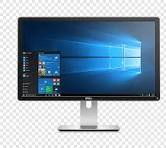
Specifications
Size: 45 inches. Resolution: 5120 x 1440
Refresh Rate: 200Hz Response Time: 1 ms
Ports: HDMI, DisplayPort Frame Syncing: AMD FreeSync
Today’s Best Deals
(Black)
Reasons to buy
- A hugely versatile monitor for under $900
- Fantastic for productivity
- Impressively fast gaming performance
Reasons to avoid
- It’s not an OLED panel
- You’ll need a big desk to accomodate it,
The best budget monitor
Specifications
Screen Size: 28 inches Resolution: 3840 x 2160
Refresh Rate: 144 Hz
Inputs: DisplayPort, HDMI, USB-A, USB-B, 3.5 mm
audio
Today’s Best Deals
(Black)
Reasons to buy
- Gorgeous colors
- Pin-sharp resolution
- Well suited for PCs and consoles
Reasons to avoid
- HDR performance isn’t the best
- It lacks USB-C connectivity
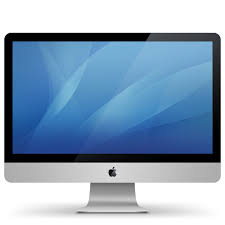
The best MacBook monitor
Specifications
Dimensions: 24.5 x 18.8 x 6.6 inches (with stand, height tops out at 23 inches w/ optional height-adjustable stand)
Screen Size: 27 inches Resolution: 5,120 x 2,880
Refresh Rate: 60Hz Ports: 3x USB-C, 1x Thunderbolt 3
Today’s Best Deals
Reasons to buy
- Beautiful, bright 5K display
- Six-speaker array delivers remarkably good sound
- 12MP ultrawide camera captures great images/video
- Elegant design
Reasons to avoid
- No height adjustment by default
- Center Stage not much use on a deskbound monitor
The best curved monitor
4. Dell UltraSharp 40 Curved Thunderbolt Hub
Specifications
Dimensions: 36.5 x 15.4 x 14.3 inches
- Screen Size: 40 inches
- Resolution: 5120 x 2160
- Refresh Rate: 120 Hz
- Inputs: DisplayPort, HDMI, USB-C
Reasons to buy
- It’s a real one of a kind
- Port array impresses
- 5K screen is a stunner
Reasons to avoid
- Glare is a problem in sun-filled rooms
- Harsh on your wallet
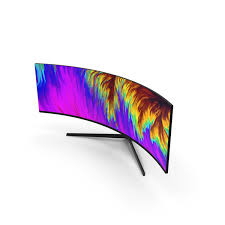
The best ultrawide monitor
Specifications
Size: 34 inches Resolution: 3440 x 1440
Refresh Rate: 165Hz (DisplayPort) Response Time: 0.1ms
Ports: HDMI 2.1, DisplayPort 1.2, USB 3.0 Frame Syncing: AMD FreeSync
Reasons to buy
- Excellent image quality
- Fast refresh and latency
- AMD FreeSync support
Reasons to avoid
- It’s only a minor update over the Alienware 34 AW3423DW
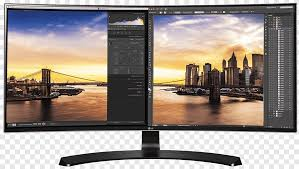
Key points in choosing the best monitor in 2024
To make a good choice, you need to consider the use you’re going to give it. Keep these main characteristics in mind.
The size of the monitor
The size of the screen will depend on two factors: the space available on the table and the distance at which you sit from the screen.
The ideal size of the monitor should depend on the distance at which you sit from it:
Screen resolution
According to monitor manufacturers, we have to buy a 4K monitor, but it is probably not the most suitable for our use. Let’s look at the following example list.
Full HD resolution (the minimum today): playing with a normal graphics card, working, entertainment.
1440p resolution: playing with powerful graphics, graphic design.
4K resolution: playing with top-of-the-range graphics, graphic design, CAD applications, entertainment.
Visual health technologies
Visual health technologies, such as Flicker-Free and Low Blue Light, will prevent fatigue, alleviate negative effects and, essentially, promote good mental and visual health, especially if we use the monitor for many hours a day.
Response time
As a general rule, it is usually between 5 and 1 ms. 5ms is ideal for everything, but for gaming it would need to be 1ms.
For multimedia entertainment or for work, this is not a parameter to worry about. Professional monitors from the top brands have response times of up to 12ms.
Refresh rate
The standard is 60Hz, and we can find monitors up to 240Hz specifically designed for gaming. Again, it depends on the use of the monitor.
Conclusion
Before buying the best monitor in 2024, you need to be clear about the use it will have, so that with these points observed, you can make the best choice.
